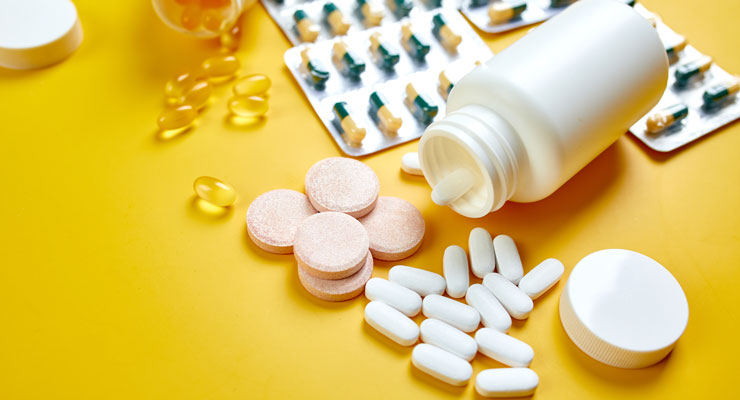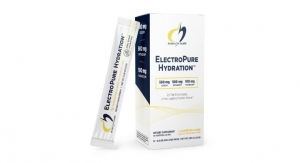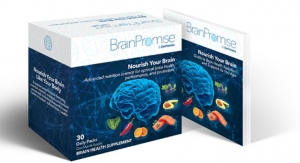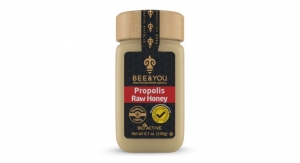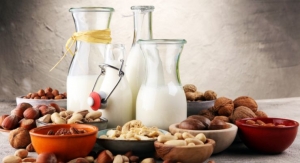By Mike Montemarano, Associate Editor01.26.22
Vitamins and minerals are the most commonly-consumed ingredient types among dietary supplement users. Vitamins A, B, C, D, E, and K, along with 21 essential minerals, serve as a trusted foundation for the dietary supplements industry.
Essential vitamin and mineral ingredients represent a strong core of the marketplace, and multivitamin/mineral formulations continue to offer a convenient means to meet recommended daily intake for key nutrients.
Sales for the vitamins and minerals supplement category overall grew 4.5% for the 52 weeks ending Dec. 26, 2021 across SPINS Natural Enhanced and Conventional Channels. Mineral supplements saw the biggest jump of 26.3%; vitamins A, D, and K combined grew 16.6% while multivitamins grew 3.1%.
Consumer Focus
Overall, usage of dietary supplements has reached an all-time high watermark of 80%, according to the Council for Responsible Nutrition (CRN) 2021 Consumer Survey on Dietary Supplements. This represents a substantial jump from 2020, when 73% of Americans reported taking at least one dietary supplement. Importantly, nearly the same (79%) number of Americans believe that the dietary supplement industry is trustworthy, a jump of five percentage points from 2020.
While multivitamin supplements are the most popular format, single-vitamin and single-mineral supplements are benefitting from a rising tide seen across the dietary supplement category as a whole, said Craig Muckle, director of communications for CRN. He noted the use of vitamin D-only supplements saw an upswing of 10 percentage points in 2021, from 42% to 52%, and vitamin C increased to 40% from a 35% usage rate in 2020.
While vitamins and minerals once accounted for 70-80% market share of dietary supplement ingredients in the middle of the 20th century, they now account for about 33% of total ingredients on the market, said Sam Wright, CEO and president of The Wright Group. “Although they are often thought of as commodities, the science behind vitamin and mineral nutrition continues to grow.”
According to Dominik Mattern, vice president of marketing for Kappa Bioscience, preference for specific ingredients over a standardized multi-supplement could be attributed to a growing interest and demand for personalization. “Supplementation should be tailored to the individual,” he said. “In turn, this requires a greater choice of forms, from classic capsules and tablets to sprays and gummies, in a personalized dosage. In the best case, these are tailored to the diet and serum blood tests. From a trend point of view, the future lies here because it is simply nutritionally necessary and reasonable.”
Another mounting call for personalization in nutritional products, and one reason why people might gravitate toward the single-ingredient variety, is the growing rate at which Americans are taking prescription drugs which impact either the activity of nutrients or the body’s ability to distribute nutrients to certain tissues. According to a review of National Health and Nutrition Examination Survey (NHANES) data, about 60% of Americans use prescription drugs, the highest rate ever recorded.1
Muckle noted that B vitamin deficiencies, for instance, are commonplace among many prescription drug users. For example, proton-pump inhibitors can deplete vitamin B12, birth control pills can deplete vitamin B6 and folic acid, diabetes medication like metformin can deplete vitamin B12 and folic acid, and hormone replacement therapies for menopause can deplete folic acid, vitamin B6, and vitamin B12 from the body.
For a broad range of medications, including antibiotics, psychiatric medications, blood pressure and blood thinning medications, diabetes drugs, diuretics, and more, users are often at risk for low levels of key vitamins and minerals, predominantly B and D vitamins, folic acid, calcium, iron, magnesium, potassium, and zinc.
Meeting micronutrient needs can be challenging among vegetarian and plant-based dieters too. As a result, food fortification in a growing assortment of plant-based alternatives will continue to be a lucrative place for vitamin and mineral innovation.

Vitamin D and Zinc in the Immune Spotlight
The immune health ingredients boom spurred on by the COVID-19 pandemic is likely to continue to reverberate into 2022, a year rung in with surges of infection, hospitalization, and death.
“As the population ages, immunity becomes a general concern, as do other chronic conditions,” Wright said. “Consumers want to take charge of their own health and try to stay out of the traditional healthcare system due to cost, and, nowadays, safety. Vitamins and minerals will always be a big part of this.”
The past year of research has included a range of studies on nutritional interventions and their impact on COVID-19. With demonstrated immune support benefits, vitamins C and D and zinc have been the subject of studies and meta-analyses, predominantly dealing with infection rates, but also with symptom duration, severity, and overall mortality rates.
Tens of thousands of outcomes of hospitalized COVID-19 patients have been compared with healthy control groups as research continues. Many reviews suggest that clinical benefit seems most promising in nutrient-deficient populations. Notably, a significant portion of the U.S. population is at risk for vitamin D and zinc deficiencies, with the latter specifically taking a toll on the elderly.2 About 95% of Americans are not meeting their vitamin D needs from food alone and approximately one third are vitamin D deficient.
More than a dozen large-scale meta-analyses of observational studies have been published in peer-reviewed scientific journals, representing thousands of COVID-19 patients and healthy controls across the globe. Overall, researchers have concluded that meeting recommended daily intake levels of vitamin D is associated with better outcomes.
A meta-analysis evaluating 91,120 participants found that vitamin D-deficient people were 80% more likely to acquire COVID-19 infection as compared to those who have sufficient vitamin D blood concentrations.3
Other published meta-analyses have concluded that either vitamin D supplementation prior to being infected with the virus, or optimal vitamin D status, are associated with reduced severity of symptoms, reduction in length of hospitalization, and reduction in mortality rates, both with and without the presence of established comorbidities.4-8
While there is still uncertainty as to whether COVID-19 infection leads to low vitamin D3 status, or if deficiency serves as a significant indicator, some meta-analyses have found that raising vitamin D blood concentrations to 50 ng/mL could achieve a “theoretical point of zero mortality.”9
While vitamin D may have grabbed headlines, judging by the sheer volume of studies compared to other nutritional interventions, expect deficiencies in other key nutrients such as vitamin K2 to gain more attention throughout the duration of the health crisis, said Jörg Büttinghaus, vice president of sales for Kappa Bioscience.
“Mortality risk inversely correlates with D status, as implied by the results of systematic reviews and meta-analyses of, now, 157 studies [vdmeta.com],” Büttinghaus said. “With the new variants, demand for vitamin D has increased significantly since Q4 of 2021 and for the second time in the pandemic. Public discussion is also growing. In addition, numerous studies on vitamin K2 in the context of COVID show that a combination of K2/D3 leads to better results than a D mono-preparation, and this is bringing K2 into focus.”
Minerals such as zinc and magnesium are also at the forefront of research on COVID-19 nutritional interventions, Büttinghaus noted, however, with less agreement than the leading vitamins.
Nonetheless, some studies on zinc indicate promise in terms of correlation with lower COVID-19 infection rates. A randomized, double-blind, placebo-controlled study found that in a population of 104 participants zinc picolinate treatment resulted in infection rates of 1.9%, compared to a control group which saw infection rates of 10.4%. This is likely due to some of its already-established prophylactic properties, the authors of this study concluded.10
Overall, minerals are experiencing a renaissance due largely to the immune health boom. Beyond zinc’s central role in immunity, robust growth in the cognitive support market has brought other minerals into the mainstream. Not to be overshadowed by herbs and botanicals, amino acids, and other specialty ingredients, finished product companies have been featuring minerals such as potassium and magnesium in their products as more evidence links these nutrients to mood improvements. Filling in nutritional gaps at a time of critical importance also brings added value to consumers seeking more bang for their buck in mood and sleep products.

A More Fitting Formulation
When it comes to filling in vitamin and mineral gaps, less can often mean more, Büttinghaus said, as some nutrients are absorbed more easily than others from food. Nutrients like vitamin K2, which is rarely consumed sufficiently from food sources, “should be the focus in multivitamin and mineral formulations. One product to fit all is not the recommended way to go. Those who want to stand out should form specific formulations for physiological, gender, and age groups.”
Positioning products as condition-specific and developing products abreast of scientific developments is crucial for companies in this space seeking to differentiate their vitamin and mineral products, Wright said. “Another way to stand out is to utilize higher value derivatives of vitamins such as Riboflavin-5’-phosphate and pyridoxal-5’ phosphate which are more soluble and potentially more bioavailable than standard vitamin B2 and B6. 5-MTHF-folate, nicotinamide riboside chloride, cobalamin, vegetarian vitamin D3, chelated minerals and various value-added forms of vitamins A and E can also add a level of uniqueness to otherwise commodity products.”
Consumers who are aware of bioavailability, tolerability, and stability issues are investing time into researching the right form of a vitamin or mineral. Standout proprietary formulations can be key to consumer appeal, Wright said. “Vitamins, per se, have not been branded as ingredients with the exception of value-added product forms such as Wright’s SuperCoat line of microencapsulated vitamins and minerals which are more stable and less prone to interact with other ingredients in a formulation.”
At the same time, some online retailers, which have seen dramatic increases in volume since the pandemic began, have adopted more stringent quality assurance and certification standards that products must meet.
Especially for mainstream multivitamin and mineral products, outside expectations of quality and consistency will grow in influence, Büttinghaus said, with companies like Amazon and CVS already touting their own quality requirements. “We expressly welcome this. It is of exceptionally high importance that stricter guidelines for dietary supplements now apply in online trade, especially on Amazon. In the past, analyses have shown that many amateurs and free riders [products with qualified health claims based on research involving a competing ingredient] are active in online commerce. With Amazon’s new transparency and quality rules, the product quality in online trade will increase significantly.”
“Responsible members of the nutrition community want to be partners with FDA and other regulatory agencies,” Wright concurred. However, he noted that the COVID-19 pandemic may have some long-term negative consequences on how the industry is regulated, which have yet to be seen.
Elise Kaiser, vice president of sales, Americas, NattoPharma-Gnosis by Lessafre, noted that brand owners are more heavily incorporating branded ingredients in their formulations as a way to stand out on shelves, “particularly when those brands offer clinical validation like MenaQ7 K2. While price remains a large deciding factor for some brand owners, consumers are demanding safe and efficacious products that deliver true health benefits. When it comes to vitamin K2 as MK-7, no other brand provides the 20-plus published human clinical trials confirming bone and cardiovascular benefits that MenaQ7 does.”
Brands benefit from the scientific research behind their ingredients, and also from regulatory work and commercial communication, said Büttinghaus. “This lowers the risks for consumers and brands and allows for transparency, which is no longer only demanded by young consumers in the digital world. Without free riders, the market becomes better. It creates additional trust and helps reach up to 30% of still-skeptical consumers.”
Across the board, Mattern said the ongoing global supply chain crisis will raise concerns about adulteration, and consumers will want assurances about the “free-from” and “clean-label” attributes of their products.
“The global dietary supplement supply chain is complex and vulnerable to disruptions,” Mattern said. “With disruptions come increased risks. Using the ingredient brand on-pack demonstrates quality to consumers, builds confidence, and helps the brand to differentiate from others in the market. K2VITAL, Kappa Bioscience’s vitamin K2, is a consistent, high-standard, and third-party verified and trusted quality K2. The identity, purity, and stability testing program for K2VITAL is unmatched in the K-vitamins world.”

Vitamin K’s Steady Ascent
Thanks to ongoing research, vitamin K2 is emerging as an unsung hero nutrient with multifaceted benefits, including bone and heart health due to its impact on metabolic pathways of calcium. Studies are also uncovering roles vitamin K2 may play in cognitive function, vision, inflammation, respiratory health, and more, bolstering its position as a crucial nutrient whose lifelong intake could be integral to healthy aging.
Available throughout all of the body’s tissues, K2 has a bidirectional impact on both cardiovascular and bone health through its influence on Matrix Gla Protein (MGP) and osteocalcin, two vitamin K-dependent proteins. Through these mechanisms, K2 is proving to be integral for maximizing the health benefits of both vitamin D and calcium.
MGP is dependent on blood concentrations of vitamin K2 to transfer calcium through a metabolic pathway where it is deposited in bones, and not in the arteries of soft tissues. The production of osteocalcin has been shown to increase with blood concentrations of vitamin D3, hence unique, synergistic benefits between D, K, and calcium with implications for a broad range of health issues. “While this is early research and more must be done, it shows great promise for the future of vitamin K2 and its potential for creating even more impactful formulas,” Kaiser said.
Establishing a recommended daily intake (RDI) for vitamin K2 would be an important platform for this nutrient, she added.
“The RDI for vitamin K is established based on coagulation factors only, but research continues to emerge that vitamin K and vitamin K-dependent proteins have physiological roles beyond coagulation,” Kaiser said. “The [Adequate Intake] for vitamin K was established at 90 μg/d for women and 120 μg/d for men for the U.S. and Canada; and in Europe, it is 1 μg/kg/d. This was based on median phylloquinone (vitamin K1) intakes estimated from national surveys back in 2001. More recent research has confirmed different bioavailability/activity between vitamins K1 and K2, and additional biological functions of K2 due to different side chains. Further, all epidemiological and interventional studies showed that K2 was cardio-protective or beneficial effects on the arteries. This has not been considered in the forming of dietary recommendations.”
Büttinghaus added that vitamin K2 is deficient in the Western diet. “It is often equated with K1, although K1 primarily acts in the liver and K2 outside the liver. Calcification and inflammation go hand-in-hand and affect all organs. This makes K2 an ‘all-arounder’ in all stages of life, especially in combination with vitamin D.”
Prior to its acquisition by Gnosis by Lesaffre, Nattopharma began its program to spearhead a K2-specific RDI in 2018 with researchers from Maastricht University in The Netherlands. To date, the research team has produced five additional peer-reviewed papers presenting the need for sufficient K2 intake, Kaiser said.
She pointed to a few of the cornerstone studies involving MenaQ7 which helped establish K2 as a critical cardiovascular health nutrient. A three-year study of 244 postmenopausal women concluded that 180 mcg of K2 as MK-7 daily was linked to regression in arterial stiffness.11 A one-year study involving 243 healthy subjects with poor vitamin K status found that supplementation significantly decreased blood concentrations of vitamin K-dependent protein, and improved vascular health markers in men and women who took arterial stiffness index tests.12
On the bone health front, Kaiser noted substantial studies using MenaQ7 for both children and adults. A three-year, randomized clinical trial of 244 healthy postmenopausal women demonstrated the first significant protection of the vertebrae and the hip against bone loss achieved with a 180 mcg dose of MenaQ7 daily, as shown by both bone mineral content, bone mineral density, and bone strength.13
Meanwhile, a study of healthy children between the ages of 6 and 10 found that daily supplementation resulted in stronger, denser bones.14 Another study of 42 children and 68 adults showed that bone-building osteocalcin levels are 8-10 times higher in children than adults, suggesting that children’s vitamin K requirements are also higher.15
“Further, our clinical work is so substantial that it has earned the attention of the medical community, which is now in process with its own trials that are using [MenaQ7] as the source material as a possible therapy for patients whose conditions present symptoms of intense calcification,” Kaiser said.
Noteworthy studies included the pending VitaK-CAC Trial,16 which examined the nutrient’s impact on coronary artery calcification, a predictor of cardiovascular disease; and the BASIK2 trial17 looking at the effect of MenaQ7 on imaging measurements of calcification in the bicuspid aortic valve and calcific aortic valve stenosis (CAVS). A 1.5-year multi-center clinical trial slated for the near future, will be conducted on Peritoneal Dialysis patients using the highest studied dosage of K2 as MK-7 to date, known as “The Effect of Vitamin K2 Supplementation on Arterial Stiffness and Cardiovascular Events in Peritoneal Dialysis (VIKIPEDIA).”
Emerging research is also linking the interplay that K2 has with vitamin D3 in leading to positive trends in COVID-19 outcomes, noted Trygve Bergeland, vice president of science for Kappa Bioscience. “Early in the pandemic, a research group in The Netherlands (Canisius Wilhemina Hospital) surprisingly published that an extrahepatic vitamin K2 insufficiency was related to poor COVID-19 outcomes.18 Kappa Bioscience AS considered the data as very important for future research and established a research collaboration with the hospital and two other independent research institutions (Bispebjerg and Frederiksberg Hospital in Denmark, and University Hospitals in the U.S.). So far, this research has generated five peer reviewed publications and has confirmed initial findings from The Netherlands.”

Research Trends to Watch
Beyond industry-supported research dealing with immune function, several more recently-uncovered health benefits tied to vitamin and mineral supplementation have been made headlines.
Epidemiological evidence is cementing vitamin D as a crucial heart health nutrient, due to strong associations with reduction of cardiovascular disease risk. In a U.K. Biobank analysis published in December, researchers analyzed 44,519 heart disease cases against a population of 251,269 healthy controls, concluding that vitamin D deficiency, at the lowest levels, was associated with a doubled risk of developing cardiovascular disease. Population-wide corrections to 50 ng/mL could result in a 4.4% reduction in CVD incidence, researchers said.19
Recently, a metabolomics study on tocotrienols, a bioavailable branch of vitamin E, was conducted on healthy postmenopausal women in order to evaluate the metabolic activities of supplementation related to oxidative stress and inflammation.
Tocotrienols, which chemically bind to cell membranes and improve phospholipids in favor of long-chain fatty acids more readily than tocopherol counterparts, are relatively understudied. The majority of research on vitamin E involves alpha tocopherol, one of eight forms of the nutrient.
In addition to finding that tocotrienols helped to reduce bone loss in participants by suppressing inflammation and oxidative stress, the study may offer the basis for future structure-function claims unique to the tocotrienol family of vitamin E.20
Magnesium, which plays an integral role in hundreds of cellular processes, has long been heralded as a staple in sports nutrition and cognitive health formulations in its various forms, including threonate, lactate, citrate, aspartate, and chloride.
The 300-plus chemical processes it is involved with in the body are central to nerve and muscle function, metabolism, energy production and storage at the cellular level, mood, and sleep.
Mounting clinical evidence has compelled the U.S. Food and Drug Administration (FDA) to announce it will use regulatory discretion to allow magnesium products to make qualified health claims related to its association with lowered blood pressure.
Meanwhile, magnesium L-threonate is at the cutting-edge in the cognitive health space as the most likely to cross the blood-brain barrier.21
Other studies looking at lifelong intake of magnesium, in all its forms, along with other minerals, are establishing the foundation for further investigations into potential roles in age-related cognitive conditions.
The PATH through Life Project for example, concluded that low dietary intake of minerals implicated in vascular processes and Alzheimer’s pathology (magnesium, potassium, and iron) were associated with age-related mild cognitive impairment (MCI) and could contribute to disease progression earlier in the disease process.22
Mike Montemarano has been the Associate Editor of Nutraceuticals World since February 2020. He can be reached at MMontemarano@RodmanMedia.com.
References
1. Kantor, E., et al. (2015). Trends in Prescription Drug Use Among Adults in the United States from 1999-2012. JAMA. 314(17):1818–1830 https://pubmed.ncbi.nlm.nih.gov/26529160/
2. Mocchegiani, E., et al. (2013). Zinc: dietary intake and impact of supplementation on immune function in elderly. Age. Jun; 35(3): 839–860. https://www.ncbi.nlm.nih.gov/pmc/articles/PMC3636409/
3. Tershome, A., et al. (2021). The Impact of Vitamin D Level on COVID-19 Infection: Systematic Review and Meta-Analysis. Frontiers In Public Health. 5;9:624559
4. Wang, Z., et al. (2021). Association of vitamin D deficiency with COVID-19 infection severity: Systematic review and meta-analysis. Journal of Clinical Endocrinology. June 23:10.1111/cen.14540 https://pubmed.ncbi.nlm.nih.gov/34160843/
5. Pereira, M., et al. (2020). Vitamin D deficiency aggravates COVID-19: systematic review and meta-analysis. Critical Reviews in Food Science and Nutrition. 4:1-9. https://pubmed.ncbi.nlm.nih.gov/33146028/
6. Pal, R., et al. (2021). Vitamin D supplementation and clinical outcomes in COVID-19: a systematic review and meta-analysis. Journal of Endocrinological Investigation. 45(1):53-68. https://pubmed.ncbi.nlm.nih.gov/34165766/
7. Akbar, M., et al. (2021). Low Serum 25-hydroxyvitamin D (Vitamin D) Level is Associated with Susceptibility to COVID-19, Severity, and Mortality. A Systematic Review and Meta-Analysis. Frontiers in Nutrition. 29;8:660420. https://pubmed.ncbi.nlm.nih.gov/33855042/
8. Petrelli, F., et al. (2021). Therapeutic and prognostic role of vitamin D for COVID-19 infection: A systematic review and meta-analysis of 43 observational studies. Journal of Steroid Biochemistry and Molecular Biology. July;211:105883 https://pubmed.ncbi.nlm.nih.gov/33775818/
9. Borsche, L., et al. (2021). COVID-19 Mortality Risk Correlates Inversely with Vitamin D3 Status, and a Mortality Rate Close to Zero Could Theoretically Be Achieved at 50 ng/mL. Nutrients. 13(10):3596 https://pubmed.ncbi.nlm.nih.gov/34684596/
10. Gordon, A., et al. (2021). Case-Control Study for the Effectiveness of Oral Zinc in the Prevention and Mitigation of COVID-19. Frontiers in Medicine. 8:756707 https://www.frontiersin.org/articles/10.3389/fmed.2021.756707/full
11. Knapen, M., et al. (2015). Menaquinone-7 supplementation improves arterial stiffness in healthy postmenopausal women. A double-blind randomized clinical trial. Thrombosis and Haemostasis. 113(5):1135-44 https://pubmed.ncbi.nlm.nih.gov/25694037/
12. Vermeer, C., et al. (2020). Effect of Menaquinone-7 (vitamin K2) on vascular elasticity in healthy subjects: results from a one-year study. Vascular Diseases and Therapeutics. 5: 1-4 https://www.oatext.com/effect-of-menaquinone-7-vitamin-k2-on-vascular-elasticity-in-healthy-subjects-results-from-a-one-year-study.php
13. Knapen, M., et al. (2012). Three-year low-dose menaquinone-7 supplementation helps decrease bone loss in healthy postmenopausal women. Osteoporosis International. 2499-2507. https://pubmed.ncbi.nlm.nih.gov/23525894/
14. Van Summeren, et al. (2009). The effect of menaquinone (vitamin K2 supplementation on osteocalcin carboxylation in healthy prepubertal children. British Journal of Nutrition. 102(8): 1171-8 https://pubmed.ncbi.nlm.nih.gov/19450370/
15. Theuwissen, E., et al. (2014). Vitamin K status in healthy volunteers. Food & Function. 5(2):229-34. https://pubmed.ncbi.nlm.nih.gov/24296867/
16. Vossen, L., et al. (2015). Menaquinone-7 Supplementation to Reduce Vascular Calcification in Patients with Coronary Artery Disease (VitaK-CAC Trial). Nutrients. 7(11):8905-15 https://pubmed.ncbi.nlm.nih.gov/26516910/
17. Peeters, F., et al. (2018). Bicuspid Aortic Valve Stenosis and the Effect of Vitamin K2 on Calcification Using 18F-Sodium Fluoride Positron Emission Tomogrpahy/Magnetic Resonance: The BASIK2 Rationale and Trial Design. Nutrients. 10(4):386 https://pubmed.ncbi.nlm.nih.gov/29561783/
18. Dofferhoff, A., et al. (2021). Reduced Vitamin K Status as a Potentially Modifiable Risk Factor of Severe Coronavirus Disease 2019. Clinical Infectious Diseases. 73(11):e4039-e4046 https://pubmed.ncbi.nlm.nih.gov/32852539/
19. Zhou, A., et al. (2021). Non-linear Mendelian randomization analyses support a role for vitamin D deficiency in cardiovascular disease risk. European Heart Journal. Ehab809. https://pubmed.ncbi.nlm.nih.gov/34891159/
20. Chwan-Li, S., et al. (2021). Tocotrienol Supplementation Led to Higher Serum Levels of Lysophospholipids but Lower Acylcarnitines in Postmenopausal Women: A Randomized Double-Blinded Placebo-Controlled Clinical Trial. Frontiers in Nutrition. https://www.frontiersin.org/articles/10.3389/fnut.2021.766711/full
21. Sun, Q., et al. (2016). Regulation of structural and functional synapse density by L-threonate through modulation of intraneuronal magnesium concentration. Neuropharmacology. 108:426-39. https://pubmed.ncbi.nlm.nih.gov/27178134/
22. Cherubin., N., et al. (2014) Dietary mineral intake and risk of mild cognitive impairment: the PATH through life project. Frontiers in Nutrition. https://www.frontiersin.org/articles/10.3389/fnagi.2014.00004/full
Essential vitamin and mineral ingredients represent a strong core of the marketplace, and multivitamin/mineral formulations continue to offer a convenient means to meet recommended daily intake for key nutrients.
Sales for the vitamins and minerals supplement category overall grew 4.5% for the 52 weeks ending Dec. 26, 2021 across SPINS Natural Enhanced and Conventional Channels. Mineral supplements saw the biggest jump of 26.3%; vitamins A, D, and K combined grew 16.6% while multivitamins grew 3.1%.
Consumer Focus
Overall, usage of dietary supplements has reached an all-time high watermark of 80%, according to the Council for Responsible Nutrition (CRN) 2021 Consumer Survey on Dietary Supplements. This represents a substantial jump from 2020, when 73% of Americans reported taking at least one dietary supplement. Importantly, nearly the same (79%) number of Americans believe that the dietary supplement industry is trustworthy, a jump of five percentage points from 2020.
While multivitamin supplements are the most popular format, single-vitamin and single-mineral supplements are benefitting from a rising tide seen across the dietary supplement category as a whole, said Craig Muckle, director of communications for CRN. He noted the use of vitamin D-only supplements saw an upswing of 10 percentage points in 2021, from 42% to 52%, and vitamin C increased to 40% from a 35% usage rate in 2020.
While vitamins and minerals once accounted for 70-80% market share of dietary supplement ingredients in the middle of the 20th century, they now account for about 33% of total ingredients on the market, said Sam Wright, CEO and president of The Wright Group. “Although they are often thought of as commodities, the science behind vitamin and mineral nutrition continues to grow.”
According to Dominik Mattern, vice president of marketing for Kappa Bioscience, preference for specific ingredients over a standardized multi-supplement could be attributed to a growing interest and demand for personalization. “Supplementation should be tailored to the individual,” he said. “In turn, this requires a greater choice of forms, from classic capsules and tablets to sprays and gummies, in a personalized dosage. In the best case, these are tailored to the diet and serum blood tests. From a trend point of view, the future lies here because it is simply nutritionally necessary and reasonable.”
Another mounting call for personalization in nutritional products, and one reason why people might gravitate toward the single-ingredient variety, is the growing rate at which Americans are taking prescription drugs which impact either the activity of nutrients or the body’s ability to distribute nutrients to certain tissues. According to a review of National Health and Nutrition Examination Survey (NHANES) data, about 60% of Americans use prescription drugs, the highest rate ever recorded.1
Muckle noted that B vitamin deficiencies, for instance, are commonplace among many prescription drug users. For example, proton-pump inhibitors can deplete vitamin B12, birth control pills can deplete vitamin B6 and folic acid, diabetes medication like metformin can deplete vitamin B12 and folic acid, and hormone replacement therapies for menopause can deplete folic acid, vitamin B6, and vitamin B12 from the body.
For a broad range of medications, including antibiotics, psychiatric medications, blood pressure and blood thinning medications, diabetes drugs, diuretics, and more, users are often at risk for low levels of key vitamins and minerals, predominantly B and D vitamins, folic acid, calcium, iron, magnesium, potassium, and zinc.
Meeting micronutrient needs can be challenging among vegetarian and plant-based dieters too. As a result, food fortification in a growing assortment of plant-based alternatives will continue to be a lucrative place for vitamin and mineral innovation.

Vitamin D and Zinc in the Immune Spotlight
The immune health ingredients boom spurred on by the COVID-19 pandemic is likely to continue to reverberate into 2022, a year rung in with surges of infection, hospitalization, and death.
“As the population ages, immunity becomes a general concern, as do other chronic conditions,” Wright said. “Consumers want to take charge of their own health and try to stay out of the traditional healthcare system due to cost, and, nowadays, safety. Vitamins and minerals will always be a big part of this.”
The past year of research has included a range of studies on nutritional interventions and their impact on COVID-19. With demonstrated immune support benefits, vitamins C and D and zinc have been the subject of studies and meta-analyses, predominantly dealing with infection rates, but also with symptom duration, severity, and overall mortality rates.
Tens of thousands of outcomes of hospitalized COVID-19 patients have been compared with healthy control groups as research continues. Many reviews suggest that clinical benefit seems most promising in nutrient-deficient populations. Notably, a significant portion of the U.S. population is at risk for vitamin D and zinc deficiencies, with the latter specifically taking a toll on the elderly.2 About 95% of Americans are not meeting their vitamin D needs from food alone and approximately one third are vitamin D deficient.
More than a dozen large-scale meta-analyses of observational studies have been published in peer-reviewed scientific journals, representing thousands of COVID-19 patients and healthy controls across the globe. Overall, researchers have concluded that meeting recommended daily intake levels of vitamin D is associated with better outcomes.
A meta-analysis evaluating 91,120 participants found that vitamin D-deficient people were 80% more likely to acquire COVID-19 infection as compared to those who have sufficient vitamin D blood concentrations.3
Other published meta-analyses have concluded that either vitamin D supplementation prior to being infected with the virus, or optimal vitamin D status, are associated with reduced severity of symptoms, reduction in length of hospitalization, and reduction in mortality rates, both with and without the presence of established comorbidities.4-8
While there is still uncertainty as to whether COVID-19 infection leads to low vitamin D3 status, or if deficiency serves as a significant indicator, some meta-analyses have found that raising vitamin D blood concentrations to 50 ng/mL could achieve a “theoretical point of zero mortality.”9
While vitamin D may have grabbed headlines, judging by the sheer volume of studies compared to other nutritional interventions, expect deficiencies in other key nutrients such as vitamin K2 to gain more attention throughout the duration of the health crisis, said Jörg Büttinghaus, vice president of sales for Kappa Bioscience.
“Mortality risk inversely correlates with D status, as implied by the results of systematic reviews and meta-analyses of, now, 157 studies [vdmeta.com],” Büttinghaus said. “With the new variants, demand for vitamin D has increased significantly since Q4 of 2021 and for the second time in the pandemic. Public discussion is also growing. In addition, numerous studies on vitamin K2 in the context of COVID show that a combination of K2/D3 leads to better results than a D mono-preparation, and this is bringing K2 into focus.”
Minerals such as zinc and magnesium are also at the forefront of research on COVID-19 nutritional interventions, Büttinghaus noted, however, with less agreement than the leading vitamins.
Nonetheless, some studies on zinc indicate promise in terms of correlation with lower COVID-19 infection rates. A randomized, double-blind, placebo-controlled study found that in a population of 104 participants zinc picolinate treatment resulted in infection rates of 1.9%, compared to a control group which saw infection rates of 10.4%. This is likely due to some of its already-established prophylactic properties, the authors of this study concluded.10
Overall, minerals are experiencing a renaissance due largely to the immune health boom. Beyond zinc’s central role in immunity, robust growth in the cognitive support market has brought other minerals into the mainstream. Not to be overshadowed by herbs and botanicals, amino acids, and other specialty ingredients, finished product companies have been featuring minerals such as potassium and magnesium in their products as more evidence links these nutrients to mood improvements. Filling in nutritional gaps at a time of critical importance also brings added value to consumers seeking more bang for their buck in mood and sleep products.

A More Fitting Formulation
When it comes to filling in vitamin and mineral gaps, less can often mean more, Büttinghaus said, as some nutrients are absorbed more easily than others from food. Nutrients like vitamin K2, which is rarely consumed sufficiently from food sources, “should be the focus in multivitamin and mineral formulations. One product to fit all is not the recommended way to go. Those who want to stand out should form specific formulations for physiological, gender, and age groups.”
Positioning products as condition-specific and developing products abreast of scientific developments is crucial for companies in this space seeking to differentiate their vitamin and mineral products, Wright said. “Another way to stand out is to utilize higher value derivatives of vitamins such as Riboflavin-5’-phosphate and pyridoxal-5’ phosphate which are more soluble and potentially more bioavailable than standard vitamin B2 and B6. 5-MTHF-folate, nicotinamide riboside chloride, cobalamin, vegetarian vitamin D3, chelated minerals and various value-added forms of vitamins A and E can also add a level of uniqueness to otherwise commodity products.”
Consumers who are aware of bioavailability, tolerability, and stability issues are investing time into researching the right form of a vitamin or mineral. Standout proprietary formulations can be key to consumer appeal, Wright said. “Vitamins, per se, have not been branded as ingredients with the exception of value-added product forms such as Wright’s SuperCoat line of microencapsulated vitamins and minerals which are more stable and less prone to interact with other ingredients in a formulation.”
At the same time, some online retailers, which have seen dramatic increases in volume since the pandemic began, have adopted more stringent quality assurance and certification standards that products must meet.
Especially for mainstream multivitamin and mineral products, outside expectations of quality and consistency will grow in influence, Büttinghaus said, with companies like Amazon and CVS already touting their own quality requirements. “We expressly welcome this. It is of exceptionally high importance that stricter guidelines for dietary supplements now apply in online trade, especially on Amazon. In the past, analyses have shown that many amateurs and free riders [products with qualified health claims based on research involving a competing ingredient] are active in online commerce. With Amazon’s new transparency and quality rules, the product quality in online trade will increase significantly.”
“Responsible members of the nutrition community want to be partners with FDA and other regulatory agencies,” Wright concurred. However, he noted that the COVID-19 pandemic may have some long-term negative consequences on how the industry is regulated, which have yet to be seen.
Elise Kaiser, vice president of sales, Americas, NattoPharma-Gnosis by Lessafre, noted that brand owners are more heavily incorporating branded ingredients in their formulations as a way to stand out on shelves, “particularly when those brands offer clinical validation like MenaQ7 K2. While price remains a large deciding factor for some brand owners, consumers are demanding safe and efficacious products that deliver true health benefits. When it comes to vitamin K2 as MK-7, no other brand provides the 20-plus published human clinical trials confirming bone and cardiovascular benefits that MenaQ7 does.”
Brands benefit from the scientific research behind their ingredients, and also from regulatory work and commercial communication, said Büttinghaus. “This lowers the risks for consumers and brands and allows for transparency, which is no longer only demanded by young consumers in the digital world. Without free riders, the market becomes better. It creates additional trust and helps reach up to 30% of still-skeptical consumers.”
Across the board, Mattern said the ongoing global supply chain crisis will raise concerns about adulteration, and consumers will want assurances about the “free-from” and “clean-label” attributes of their products.
“The global dietary supplement supply chain is complex and vulnerable to disruptions,” Mattern said. “With disruptions come increased risks. Using the ingredient brand on-pack demonstrates quality to consumers, builds confidence, and helps the brand to differentiate from others in the market. K2VITAL, Kappa Bioscience’s vitamin K2, is a consistent, high-standard, and third-party verified and trusted quality K2. The identity, purity, and stability testing program for K2VITAL is unmatched in the K-vitamins world.”

Vitamin K’s Steady Ascent
Thanks to ongoing research, vitamin K2 is emerging as an unsung hero nutrient with multifaceted benefits, including bone and heart health due to its impact on metabolic pathways of calcium. Studies are also uncovering roles vitamin K2 may play in cognitive function, vision, inflammation, respiratory health, and more, bolstering its position as a crucial nutrient whose lifelong intake could be integral to healthy aging.
Available throughout all of the body’s tissues, K2 has a bidirectional impact on both cardiovascular and bone health through its influence on Matrix Gla Protein (MGP) and osteocalcin, two vitamin K-dependent proteins. Through these mechanisms, K2 is proving to be integral for maximizing the health benefits of both vitamin D and calcium.
MGP is dependent on blood concentrations of vitamin K2 to transfer calcium through a metabolic pathway where it is deposited in bones, and not in the arteries of soft tissues. The production of osteocalcin has been shown to increase with blood concentrations of vitamin D3, hence unique, synergistic benefits between D, K, and calcium with implications for a broad range of health issues. “While this is early research and more must be done, it shows great promise for the future of vitamin K2 and its potential for creating even more impactful formulas,” Kaiser said.
Establishing a recommended daily intake (RDI) for vitamin K2 would be an important platform for this nutrient, she added.
“The RDI for vitamin K is established based on coagulation factors only, but research continues to emerge that vitamin K and vitamin K-dependent proteins have physiological roles beyond coagulation,” Kaiser said. “The [Adequate Intake] for vitamin K was established at 90 μg/d for women and 120 μg/d for men for the U.S. and Canada; and in Europe, it is 1 μg/kg/d. This was based on median phylloquinone (vitamin K1) intakes estimated from national surveys back in 2001. More recent research has confirmed different bioavailability/activity between vitamins K1 and K2, and additional biological functions of K2 due to different side chains. Further, all epidemiological and interventional studies showed that K2 was cardio-protective or beneficial effects on the arteries. This has not been considered in the forming of dietary recommendations.”
Büttinghaus added that vitamin K2 is deficient in the Western diet. “It is often equated with K1, although K1 primarily acts in the liver and K2 outside the liver. Calcification and inflammation go hand-in-hand and affect all organs. This makes K2 an ‘all-arounder’ in all stages of life, especially in combination with vitamin D.”
Prior to its acquisition by Gnosis by Lesaffre, Nattopharma began its program to spearhead a K2-specific RDI in 2018 with researchers from Maastricht University in The Netherlands. To date, the research team has produced five additional peer-reviewed papers presenting the need for sufficient K2 intake, Kaiser said.
She pointed to a few of the cornerstone studies involving MenaQ7 which helped establish K2 as a critical cardiovascular health nutrient. A three-year study of 244 postmenopausal women concluded that 180 mcg of K2 as MK-7 daily was linked to regression in arterial stiffness.11 A one-year study involving 243 healthy subjects with poor vitamin K status found that supplementation significantly decreased blood concentrations of vitamin K-dependent protein, and improved vascular health markers in men and women who took arterial stiffness index tests.12
On the bone health front, Kaiser noted substantial studies using MenaQ7 for both children and adults. A three-year, randomized clinical trial of 244 healthy postmenopausal women demonstrated the first significant protection of the vertebrae and the hip against bone loss achieved with a 180 mcg dose of MenaQ7 daily, as shown by both bone mineral content, bone mineral density, and bone strength.13
Meanwhile, a study of healthy children between the ages of 6 and 10 found that daily supplementation resulted in stronger, denser bones.14 Another study of 42 children and 68 adults showed that bone-building osteocalcin levels are 8-10 times higher in children than adults, suggesting that children’s vitamin K requirements are also higher.15
“Further, our clinical work is so substantial that it has earned the attention of the medical community, which is now in process with its own trials that are using [MenaQ7] as the source material as a possible therapy for patients whose conditions present symptoms of intense calcification,” Kaiser said.
Noteworthy studies included the pending VitaK-CAC Trial,16 which examined the nutrient’s impact on coronary artery calcification, a predictor of cardiovascular disease; and the BASIK2 trial17 looking at the effect of MenaQ7 on imaging measurements of calcification in the bicuspid aortic valve and calcific aortic valve stenosis (CAVS). A 1.5-year multi-center clinical trial slated for the near future, will be conducted on Peritoneal Dialysis patients using the highest studied dosage of K2 as MK-7 to date, known as “The Effect of Vitamin K2 Supplementation on Arterial Stiffness and Cardiovascular Events in Peritoneal Dialysis (VIKIPEDIA).”
Emerging research is also linking the interplay that K2 has with vitamin D3 in leading to positive trends in COVID-19 outcomes, noted Trygve Bergeland, vice president of science for Kappa Bioscience. “Early in the pandemic, a research group in The Netherlands (Canisius Wilhemina Hospital) surprisingly published that an extrahepatic vitamin K2 insufficiency was related to poor COVID-19 outcomes.18 Kappa Bioscience AS considered the data as very important for future research and established a research collaboration with the hospital and two other independent research institutions (Bispebjerg and Frederiksberg Hospital in Denmark, and University Hospitals in the U.S.). So far, this research has generated five peer reviewed publications and has confirmed initial findings from The Netherlands.”

Research Trends to Watch
Beyond industry-supported research dealing with immune function, several more recently-uncovered health benefits tied to vitamin and mineral supplementation have been made headlines.
Epidemiological evidence is cementing vitamin D as a crucial heart health nutrient, due to strong associations with reduction of cardiovascular disease risk. In a U.K. Biobank analysis published in December, researchers analyzed 44,519 heart disease cases against a population of 251,269 healthy controls, concluding that vitamin D deficiency, at the lowest levels, was associated with a doubled risk of developing cardiovascular disease. Population-wide corrections to 50 ng/mL could result in a 4.4% reduction in CVD incidence, researchers said.19
Recently, a metabolomics study on tocotrienols, a bioavailable branch of vitamin E, was conducted on healthy postmenopausal women in order to evaluate the metabolic activities of supplementation related to oxidative stress and inflammation.
Tocotrienols, which chemically bind to cell membranes and improve phospholipids in favor of long-chain fatty acids more readily than tocopherol counterparts, are relatively understudied. The majority of research on vitamin E involves alpha tocopherol, one of eight forms of the nutrient.
In addition to finding that tocotrienols helped to reduce bone loss in participants by suppressing inflammation and oxidative stress, the study may offer the basis for future structure-function claims unique to the tocotrienol family of vitamin E.20
Magnesium, which plays an integral role in hundreds of cellular processes, has long been heralded as a staple in sports nutrition and cognitive health formulations in its various forms, including threonate, lactate, citrate, aspartate, and chloride.
The 300-plus chemical processes it is involved with in the body are central to nerve and muscle function, metabolism, energy production and storage at the cellular level, mood, and sleep.
Mounting clinical evidence has compelled the U.S. Food and Drug Administration (FDA) to announce it will use regulatory discretion to allow magnesium products to make qualified health claims related to its association with lowered blood pressure.
Meanwhile, magnesium L-threonate is at the cutting-edge in the cognitive health space as the most likely to cross the blood-brain barrier.21
Other studies looking at lifelong intake of magnesium, in all its forms, along with other minerals, are establishing the foundation for further investigations into potential roles in age-related cognitive conditions.
The PATH through Life Project for example, concluded that low dietary intake of minerals implicated in vascular processes and Alzheimer’s pathology (magnesium, potassium, and iron) were associated with age-related mild cognitive impairment (MCI) and could contribute to disease progression earlier in the disease process.22
Mike Montemarano has been the Associate Editor of Nutraceuticals World since February 2020. He can be reached at MMontemarano@RodmanMedia.com.
References
1. Kantor, E., et al. (2015). Trends in Prescription Drug Use Among Adults in the United States from 1999-2012. JAMA. 314(17):1818–1830 https://pubmed.ncbi.nlm.nih.gov/26529160/
2. Mocchegiani, E., et al. (2013). Zinc: dietary intake and impact of supplementation on immune function in elderly. Age. Jun; 35(3): 839–860. https://www.ncbi.nlm.nih.gov/pmc/articles/PMC3636409/
3. Tershome, A., et al. (2021). The Impact of Vitamin D Level on COVID-19 Infection: Systematic Review and Meta-Analysis. Frontiers In Public Health. 5;9:624559
4. Wang, Z., et al. (2021). Association of vitamin D deficiency with COVID-19 infection severity: Systematic review and meta-analysis. Journal of Clinical Endocrinology. June 23:10.1111/cen.14540 https://pubmed.ncbi.nlm.nih.gov/34160843/
5. Pereira, M., et al. (2020). Vitamin D deficiency aggravates COVID-19: systematic review and meta-analysis. Critical Reviews in Food Science and Nutrition. 4:1-9. https://pubmed.ncbi.nlm.nih.gov/33146028/
6. Pal, R., et al. (2021). Vitamin D supplementation and clinical outcomes in COVID-19: a systematic review and meta-analysis. Journal of Endocrinological Investigation. 45(1):53-68. https://pubmed.ncbi.nlm.nih.gov/34165766/
7. Akbar, M., et al. (2021). Low Serum 25-hydroxyvitamin D (Vitamin D) Level is Associated with Susceptibility to COVID-19, Severity, and Mortality. A Systematic Review and Meta-Analysis. Frontiers in Nutrition. 29;8:660420. https://pubmed.ncbi.nlm.nih.gov/33855042/
8. Petrelli, F., et al. (2021). Therapeutic and prognostic role of vitamin D for COVID-19 infection: A systematic review and meta-analysis of 43 observational studies. Journal of Steroid Biochemistry and Molecular Biology. July;211:105883 https://pubmed.ncbi.nlm.nih.gov/33775818/
9. Borsche, L., et al. (2021). COVID-19 Mortality Risk Correlates Inversely with Vitamin D3 Status, and a Mortality Rate Close to Zero Could Theoretically Be Achieved at 50 ng/mL. Nutrients. 13(10):3596 https://pubmed.ncbi.nlm.nih.gov/34684596/
10. Gordon, A., et al. (2021). Case-Control Study for the Effectiveness of Oral Zinc in the Prevention and Mitigation of COVID-19. Frontiers in Medicine. 8:756707 https://www.frontiersin.org/articles/10.3389/fmed.2021.756707/full
11. Knapen, M., et al. (2015). Menaquinone-7 supplementation improves arterial stiffness in healthy postmenopausal women. A double-blind randomized clinical trial. Thrombosis and Haemostasis. 113(5):1135-44 https://pubmed.ncbi.nlm.nih.gov/25694037/
12. Vermeer, C., et al. (2020). Effect of Menaquinone-7 (vitamin K2) on vascular elasticity in healthy subjects: results from a one-year study. Vascular Diseases and Therapeutics. 5: 1-4 https://www.oatext.com/effect-of-menaquinone-7-vitamin-k2-on-vascular-elasticity-in-healthy-subjects-results-from-a-one-year-study.php
13. Knapen, M., et al. (2012). Three-year low-dose menaquinone-7 supplementation helps decrease bone loss in healthy postmenopausal women. Osteoporosis International. 2499-2507. https://pubmed.ncbi.nlm.nih.gov/23525894/
14. Van Summeren, et al. (2009). The effect of menaquinone (vitamin K2 supplementation on osteocalcin carboxylation in healthy prepubertal children. British Journal of Nutrition. 102(8): 1171-8 https://pubmed.ncbi.nlm.nih.gov/19450370/
15. Theuwissen, E., et al. (2014). Vitamin K status in healthy volunteers. Food & Function. 5(2):229-34. https://pubmed.ncbi.nlm.nih.gov/24296867/
16. Vossen, L., et al. (2015). Menaquinone-7 Supplementation to Reduce Vascular Calcification in Patients with Coronary Artery Disease (VitaK-CAC Trial). Nutrients. 7(11):8905-15 https://pubmed.ncbi.nlm.nih.gov/26516910/
17. Peeters, F., et al. (2018). Bicuspid Aortic Valve Stenosis and the Effect of Vitamin K2 on Calcification Using 18F-Sodium Fluoride Positron Emission Tomogrpahy/Magnetic Resonance: The BASIK2 Rationale and Trial Design. Nutrients. 10(4):386 https://pubmed.ncbi.nlm.nih.gov/29561783/
18. Dofferhoff, A., et al. (2021). Reduced Vitamin K Status as a Potentially Modifiable Risk Factor of Severe Coronavirus Disease 2019. Clinical Infectious Diseases. 73(11):e4039-e4046 https://pubmed.ncbi.nlm.nih.gov/32852539/
19. Zhou, A., et al. (2021). Non-linear Mendelian randomization analyses support a role for vitamin D deficiency in cardiovascular disease risk. European Heart Journal. Ehab809. https://pubmed.ncbi.nlm.nih.gov/34891159/
20. Chwan-Li, S., et al. (2021). Tocotrienol Supplementation Led to Higher Serum Levels of Lysophospholipids but Lower Acylcarnitines in Postmenopausal Women: A Randomized Double-Blinded Placebo-Controlled Clinical Trial. Frontiers in Nutrition. https://www.frontiersin.org/articles/10.3389/fnut.2021.766711/full
21. Sun, Q., et al. (2016). Regulation of structural and functional synapse density by L-threonate through modulation of intraneuronal magnesium concentration. Neuropharmacology. 108:426-39. https://pubmed.ncbi.nlm.nih.gov/27178134/
22. Cherubin., N., et al. (2014) Dietary mineral intake and risk of mild cognitive impairment: the PATH through life project. Frontiers in Nutrition. https://www.frontiersin.org/articles/10.3389/fnagi.2014.00004/full

